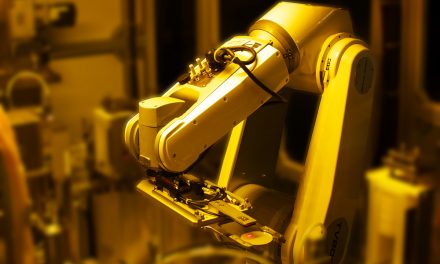Addicted to Cheap – The Truth About Reshoring
By Philip Stoten
As the pendulum swings from globalization to regionalization, many are talking about a manufacturing renaissance in the US and in Europe. Governments are doing their bit with incentives like the CHIPS act, with tariffs on foreign products, and even restrictions on the devices and technology that can be exported to certain countries.
So, I am exploring the reality behind the hype of reshoring, what more regional supply chains might mean, and importantly whether we have to rethink our addiction to cheap consumer electronics. Spoiler alert – we really should!
Chasing Cheap or Loving Local

By Philip Spagnoli Stoten Founder of SCOOP
We have chased low cost labor for more than thirty years, with the simple goal of making our products cheaper, to deliver greater market adoption, and ever higher volumes. This, of course, came at a huge cost as manufacturing moved from higher cost to lower cost parts of the world, largely leaving the US and Western Europe for China and other parts of Asia, but also heading to local low cost regions like Eastern Europe, México and Central America, not forgetting places like Tunisia, recently highlighted on EMSNOW & in4ma on tour.
Let’s start with what was good about these three decades, before getting into the impact of thirty years of industrial neglect. First and foremost, we achieved our goal, we got our electronics much cheaper than we would have if we’d made them close to the consumer. The sad reality is that this ‘old’ model relies on those making the products being so poorly paid that they can’t afford the products, at least initially. Secondly, we built some impressive global supply chain and manufacturing partnerships that actually raised the standard of living in those low cost regions. Over decades of industrial development, close to 500 million Chinese people have moved out of poverty and we now see a growing Chinese middle class with disposable incomes, which of course leads to a new and substantial consumer market.
Back in the 1990s globalization was all the rage. Every tech company’s earnings call had someone asking why manufacturing wasn’t outsourced to a lower cost environment. We saw everyone as a potential trading partner, we wanted to utilize their low cost labor and gain access to their markets, and they wanted to develop their own economies and raise the standards of living for their own citizens.
These seem like pretty laudable ambitions, but they came at a cost as we rushed lemming-like in one direction – east to China. Meanwhile, China was more than happy to be the ‘factory for the world’ and it built an industrial policy that created some of the best supply chains in the world as well as an ecosystem that no-one could compete with in terms of price and speed.
After the pandemic had exposed the risks and fragility of having all of our manufacturing eggs in one basket, people started to rethink manufacturing geography. They also started to value factors beyond price, such as reliability, security, trust and speed to market. Before COVID we had already seen the political winds change direction, with many countries, particularly the USA, adding tariffs to make certain foreign produced goods less attractive. Recently these trade wars have become more aggressive and combative, perhaps even a little protectionist as national agendas have taken center stage over a bigger global picture.
Now we find ourselves talking about reshoring, friend-shoring and more recently, about regionalization. But the truth is, while higher cost regions get investment, the real winners have been lower cost regions that are closer to the consumer, and, inevitably and significantly, lower cost regions that are simply not China.
The biggest winners so far have been Eastern Europe, México, Vietnam (and a few others in South East Asia), and of course India. Many are talking up India as the next China, which is an age-old story and one that has been countered by concerns over political stability, poor logistics and infrastructure, corruption and bureaucracy. Perhaps the current, more business friendly leadership is the difference, and this time the story will become a reality. If it can do just a small part of what China has done it has a chance to also lift millions out of poverty.
But if we are to embrace local, be that in the same country or the same region, a few things will need to happen:
- We will need to rebuild a lot of the infrastructure, supply chain and ecosystems that we mothballed, closed or ignored for decades.
- We will need to rebuild the talent pool that has either retired, headed overseas, or moved into other industries.
- We will need to fully embrace automation and everything that comes with it, including, but not exclusively, artificial intelligence.
- And we will need to change the way consumers view their products. Designed in California shouldn’t be enough to get consumers to buy products, they should be more thoughtful about the supply chain of the product and its impact.
Pay More, Earn More and Get More
If populations decide they want to have manufacturing as part of their national landscape, they need to understand that those working in manufacturing want and deserve sustainable well paid jobs. Without those sustainable well paid jobs, these industries will not thrive, or even survive, regardless of the investment of the government. And the companies need to be allowed to make a profit that allows them to invest for the future.
If consumers can break their addiction to very cheap goods and accept that they must pay a little more for local production we will all be better off. And by ‘all’ I mean the wonderful smart people in manufacturing and supply chain, the consumer, and of course the planet. I’m not suggesting going cold-turkey, just a more thoughtful selection and purchasing process.
Match this small change in consumer behavior with an investment in making manufacturing more automated, more competitive and more sustainable and we’ll find ourselves in a better place with a brighter future!
To learn more about tariffs and their impact, check out my recent interview and podcast with Shawn DuBravac on EMS & The Economist (part of the EMS@C-Level series).
Video – https://youtu.be/3HOBQo9p_vE
Audio only – https://emsatc.buzzsprout.com/share












